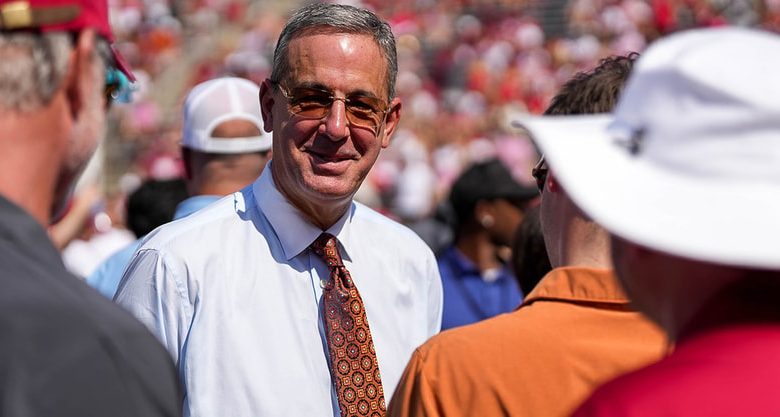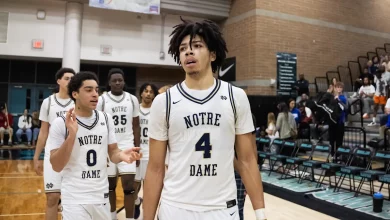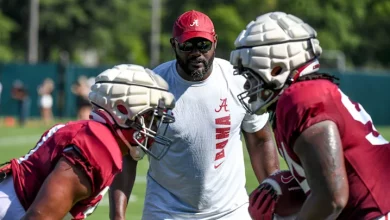The cost of football season tickets in Texas is going up. This is the reason.

The Rising Cost of Football Season Tickets in Texas: Understanding the Reasons
Football season tickets are a beloved tradition for sports fans across Texas. From the Texas Longhorns and Texas A&M Aggies to the Dallas Cowboys, football is deeply embedded in the culture of the state. However, for many fans, the excitement of attending games and cheering on their teams has become increasingly costly. The price of football season tickets in Texas has been rising steadily in recent years, prompting many fans to question the reasons behind these hikes. As costs rise, some are finding themselves priced out of attending games, while others are grumbling about the affordability of their beloved sports.
In this article, we will explore the various factors contributing to the rising cost of football season tickets in Texas, examine the broader impact on fans and the sports industry, and consider whether there are ways to manage these increases. From rising operational costs to increased demand and new revenue models for athletic programs, the reasons behind ticket price hikes are multifaceted and influenced by a range of economic, institutional, and societal factors.
1. Inflation and Increased Operational Costs
One of the most straightforward explanations for the rising cost of football season tickets in Texas is inflation. Like many industries, college football and professional football teams are not immune to the rising costs of doing business. Over time, inflation impacts nearly every aspect of the football program, from staffing and player salaries to equipment, travel, and facilities.
Athletic programs in Texas, especially at the college level, face significant expenses. These programs often have large coaching staffs, travel budgets, and considerable facilities maintenance costs. For instance, maintaining massive stadiums like the Cotton Bowl or Texas Memorial Stadium requires substantial funds, not only to keep them in top condition but to continually upgrade and expand to meet fan demands for better experiences. The costs associated with stadium operations, such as security, concessions, and utilities, also increase every year. These expenses are directly tied to the cost of football season tickets.
Moreover, teams at both the professional and college levels must account for player salaries, scholarships for college athletes, and the costs of recruiting top talent. Professional football teams, including the Dallas Cowboys, have to negotiate and manage player contracts, which include multimillion-dollar salaries. These costs eventually trickle down to the fans in the form of ticket price increases.
2. Demand for Premium Seating and Experience
The demand for a premium game day experience has become another significant factor in the rising cost of season tickets. Fans are no longer content with simply attending the game—they expect an experience that includes high-quality amenities, better seating, and upgraded in-stadium services. This shift has led to the expansion of luxury seating options, such as suites, club seats, and premium access areas.
For instance, in recent years, the University of Texas has made significant investments in its football stadium to cater to affluent fans, including the creation of luxury boxes and high-end seating areas that provide added comfort and exclusive perks. These premium seating options come at a steep price, which has led to an overall increase in ticket prices to accommodate the rising demand for these exclusive spots.
Additionally, professional teams like the Dallas Cowboys have invested heavily in stadium enhancements and luxury seating options. AT&T Stadium, home of the Cowboys, boasts world-class amenities and seating choices that appeal to wealthier fans. For example, luxury suites at the stadium can cost tens of thousands of dollars per season, contributing to the overall rise in ticket prices across the board. As these premium options continue to grow in demand, their presence leads to higher ticket prices in general.
As a result, the cost of attending games is no longer just about the basic price of a seat. It’s about creating a premium experience for fans who are willing to pay more for the luxury of high-end amenities. However, this comes at the expense of the more budget-conscious fans who can no longer afford to attend games unless they are willing to settle for less desirable seats.
3. Television Contracts and Media Revenue
The relationship between college football and media revenue is another reason why ticket prices have been climbing. Television contracts play a critical role in funding college and professional football programs. Major conferences like the Big 12, SEC, and others negotiate multi-billion-dollar television deals with networks like ESPN, FOX, and CBS. These contracts guarantee significant revenue for the schools and teams, which often reduces the immediate pressure on ticket sales as a primary source of funding.
However, this increased influx of media money can also lead to a shift in priorities. Athletic programs and teams may become more reliant on their media contracts for financial stability, which could reduce their focus on ensuring ticket prices remain affordable for everyday fans. The cost of season tickets, particularly for high-demand teams, may increase as teams work to maximize their revenue potential from all available sources, including ticket sales.
Another aspect of this is the rise of broadcast technology. With the growing importance of television broadcasts, teams have more incentive to ensure that their stadiums and the game-day experience meet the expectations of television networks, which often require enhancements such as larger jumbotrons, higher-definition cameras, and upgraded infrastructure. These improvements, though crucial for broadcasting, further inflate the cost of maintaining a high-caliber stadium, which, in turn, results in higher ticket prices for fans.
4. Expansion of Facilities and Upgrades
Texas universities and professional teams are investing heavily in upgrading their stadiums and athletic facilities. As mentioned, maintaining and modernizing these venues comes with a significant price tag. From larger scoreboards and state-of-the-art locker rooms to improved seating and better fan amenities, these upgrades require substantial investments.
For example, the University of Texas has spent millions of dollars in recent years upgrading its facilities, including the expansion of the north end zone of Darrell K Royal–Texas Memorial Stadium. These investments are designed to improve the fan experience, attract more recruits, and enhance the overall atmosphere of game days. Similarly, other universities and professional teams have undertaken similar projects, including luxury boxes, enhanced concessions, and larger concourses.
However, these upgrades ultimately increase the operating costs of the facilities, which must be passed on to fans. With the constant demand for bigger and better stadiums, the cost of tickets continues to rise to accommodate these improvements. Fans often find themselves paying more for the privilege of experiencing these luxury facilities, whether they want them or not.
5. NIL (Name, Image, Likeness) and Player Compensation
A more recent factor contributing to the rising cost of college football tickets in Texas is the introduction of NIL (Name, Image, and Likeness) deals for athletes. Following the NCAA’s ruling in 2021, college athletes were granted the ability to profit from their name, image, and likeness. This has allowed players to secure lucrative endorsement deals with businesses and companies, adding a new layer of financial complexity to the college football landscape.
While these NIL deals benefit athletes directly, they also impact athletic programs’ financial structures. The funds that universities are now required to allocate for NIL-related opportunities (both for individual athletes and teams) must be considered as part of the overall budget. This new financial landscape may lead to increased ticket prices to ensure that programs have enough revenue to cover the costs associated with NIL.
In some cases, programs may have to ramp up their resources to compete with other schools, which may mean raising ticket prices to fund these efforts. As the competition for top talent increases, so too do the financial demands on the programs, and fans will likely bear some of the costs through higher ticket prices.
6. Competition and Increased Fan Engagement
Lastly, as football has become more commercialized and competitive, teams in Texas are striving to attract larger audiences and maintain fan engagement. The state’s sports teams, including those at the professional level like the Dallas Cowboys and at the collegiate level like the Texas Longhorns and Texas A&M Aggies, face increasing competition for fan attention.
The landscape of sports entertainment is shifting. From streaming platforms and video games to alternative entertainment options, fans have more choices than ever before. To stay relevant and continue to draw crowds, football teams in Texas must invest in attracting new fans while keeping existing ones engaged. This has led to a rise in marketing campaigns, fan loyalty programs, and specialized seating areas, all of which are designed to improve the overall fan experience.
While these efforts are beneficial in terms of fan engagement, they come at a cost. Teams and universities are investing more money into advertising, sponsorships, and other revenue-generating initiatives to keep the fanbase engaged, which in turn drives up ticket prices.









